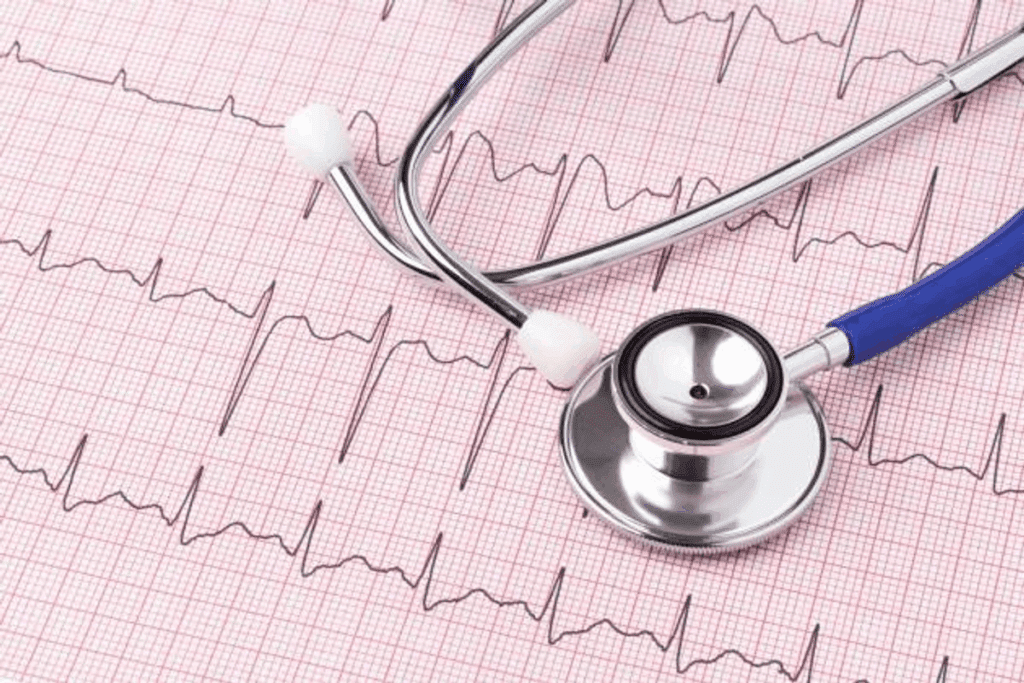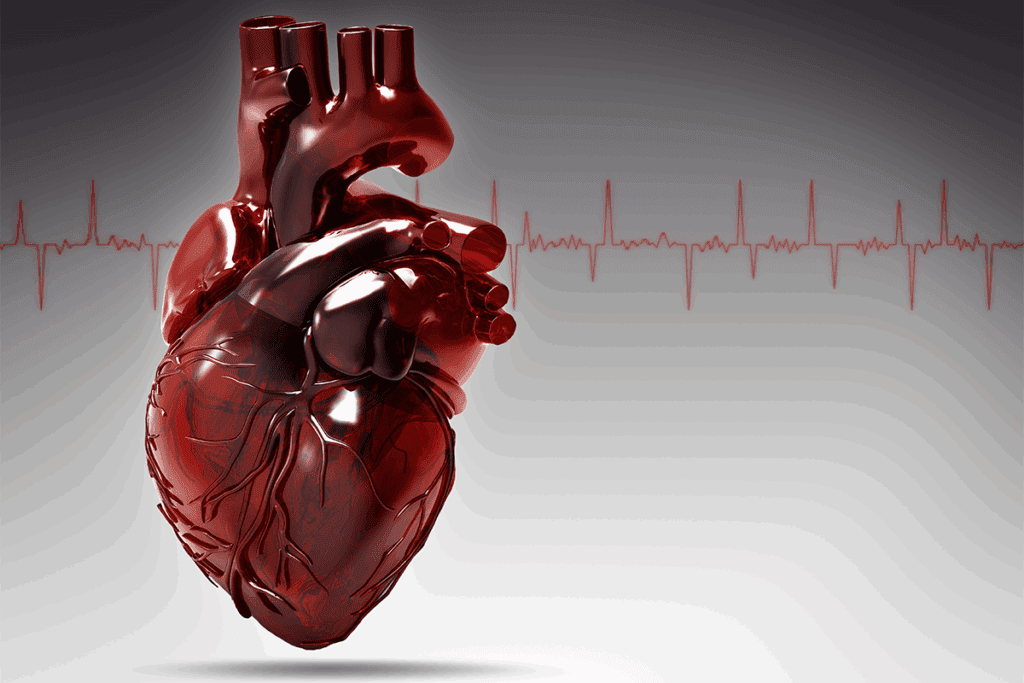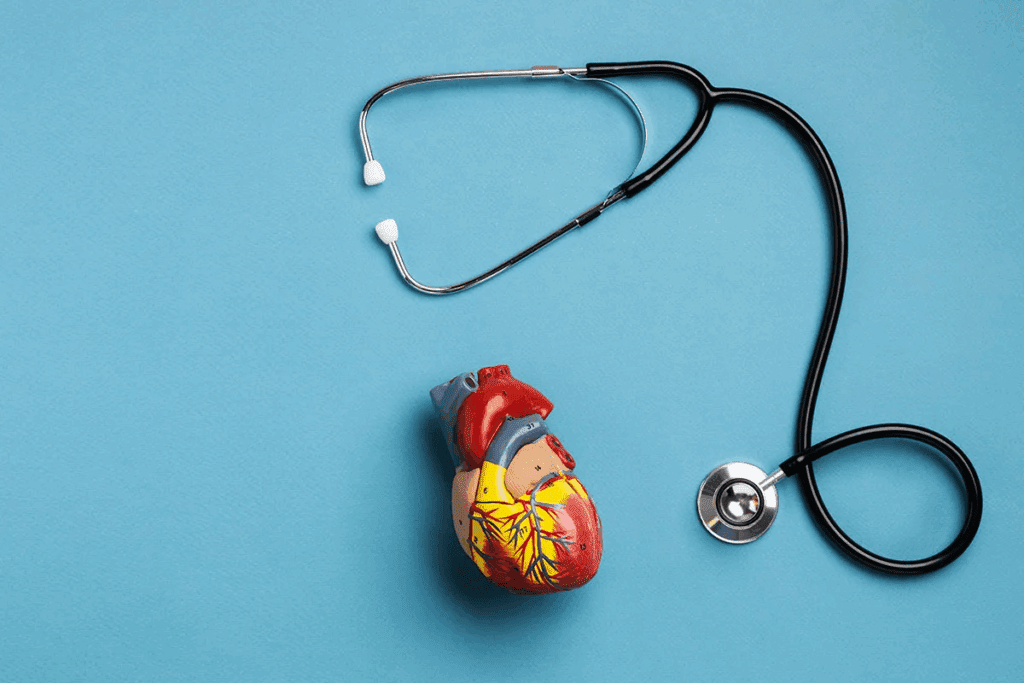Last Updated on October 31, 2025 by Batuhan Temel

At Liv Hospital, we know how important it is to understand the difference between arrhythmia and dysrhythmia. Both terms mean an irregular heart rhythm. But they come from different words and are used in slightly different ways.
An abnormal heart rhythm happens when the heart’s electrical system goes wrong. This can cause serious problems. That’s why it’s key to get the right diagnosis and treatment. We work hard to make sure our patients get the best care by knowing the difference between these two conditions.

Arrhythmias and dysrhythmias are terms for irregular heartbeats. They can be too fast, too slow, or irregular. The heart has an electrical system that controls its rhythm, ensuring blood is pumped well.
The heart’s rhythm is controlled by a complex electrical system. It starts with the sinoatrial (SA) node, the heart’s natural pacemaker. The SA node sends signals to the atrioventricular (AV) node, then to the ventricles. This makes the heart muscle contract and pump blood.
A normal heart rhythm, or sinus rhythm, is between 60 to 100 beats per minute.
Disruptions in the heart’s electrical system can cause arrhythmias or dysrhythmias. These can make the heart beat too quickly (tachycardia), too slowly (bradycardia), or irregularly. Causes include structural heart disease, electrolyte imbalances, and certain medications.
Understanding these conditions is key for proper diagnosis and treatment.

Looking into the origins of ‘arrhythmia’ and ‘dysrhythmia’ helps us see their differences and similarities. These roots give us clues about their meanings and roles in heart health.
The word “arrhythmia” comes from Greek. “A-” means “without,” and “rhythmia” means rhythm. So, “arrhythmia” means “without rhythm.” In medicine, it means the heart beats in an irregular or abnormal way. The lack of a regular rhythm is what defines arrhythmia.
A medical expert says, “Arrhythmia covers many heart rhythm problems. These can cause serious issues.” This shows why accurate diagnosis and treatment are so important.
“Dysrhythmia” comes from Greek too. “Dys-” means “difficult” or “abnormal,” and “rhythmia” is rhythm again. So, “dysrhythmia” means “abnormal rhythm.” This small difference in roots means dysrhythmia is about rhythm that’s off, not completely missing.
The “dys-” prefix is used in many medical words to mean abnormal or hard. So, “dysrhythmia” points out the heart’s rhythm is not normal.
Even though both terms talk about irregular heart rhythms, knowing their roots helps us understand them better. For doctors, knowing these differences can make communication and diagnosis clearer.
Looking into the medical use of arrhythmia and dysrhythmia shows their history and today’s use. These terms are often mixed up to mean any odd heart rate or rhythm.
Both terms talk about heart rhythm problems, but their use has changed. To get today’s meaning, we need to look back at their history in medical writing.
For a long time, “arrhythmia” was the main term for heart rhythm issues. It covered conditions where the heart beats too fast, too slow, or irregularly.
“Dysrhythmia” came later as an option, for specific rhythm issues. But, the difference between them was not always clear, making their use varied.
Nowadays, “arrhythmia” is the go-to term. It covers a wide range of heart rhythm problems, like tachycardia and irregular beats.
“Dysrhythmia” is seen less often, mainly in specific or old contexts. But “arrhythmia” is the top choice in today’s healthcare.
| Term | Historical Usage | Current Preference |
| Arrhythmia | Traditionally used to describe irregular heart rhythms | Widely used and accepted in modern healthcare |
| Dysrhythmia | Used as an alternative, sometimes for specific rhythm disturbances | Less commonly used, mostly in specific or historical contexts |
It’s clear that “arrhythmia” is the main term now for heart rhythm issues. Knowing this helps doctors and patients talk clearly and understand each other better.
Cardiac rhythm disorders can really affect someone’s life. They can make heartbeats too fast, too slow, or irregular. These issues, known as arrhythmias or dysrhythmias, can lead to symptoms that make daily life hard.
Common symptoms include palpitations, shortness of breath, dizziness, and fatigue. Knowing the different types of these disorders is key for proper diagnosis and treatment. We’ll look at the main types, including tachycardia, bradycardia, and irregular heart rhythms.
Tachycardia is when the heart beats too quickly, over 100 beats per minute. It can be caused by stress, certain medicines, or heart problems. Symptoms include:
In some cases, tachycardia is a sign of a bigger problem that needs medical help. Treatment might include medicines, lifestyle changes, or procedures to fix the heart rhythm.
Bradycardia is when the heart beats too slowly, under 60 beats per minute. It can cause symptoms like:
Bradycardia can be due to aging, medicines, or health issues. Treatment might involve fixing the cause, a pacemaker, or lifestyle changes.
Irregular heart rhythms, or arrhythmias, happen when the heart’s electrical signals get mixed up. Atrial fibrillation is a common one, with rapid and irregular beats. Symptoms include:
Irregular heart rhythms can raise the risk of stroke and other problems. Treatment might include medicines, cardioversion, or catheter ablation to fix the rhythm.
It’s important to know about the different cardiac rhythm disorders for good management and treatment. Recognizing symptoms and understanding these conditions helps people get the right care.
Arrhythmias and dysrhythmias often stem from various factors. Knowing these causes is key to preventing, diagnosing, and treating them. We’ll look at the main reasons for irregular heartbeats, like heart disease, imbalances in electrolytes, medication side effects, and lifestyle choices.
Heart disease is a big reason for arrhythmias and dysrhythmias. Issues like coronary artery disease, heart valve problems, and cardiomyopathy can mess with the heart’s rhythm. For example, coronary artery disease can cause heart attacks, leading to scar tissue and disrupting heart electrical pathways.
Common structural heart diseases associated with arrhythmias include:
Electrolytes like potassium, sodium, and calcium are vital for the heart’s electrical activity. When these electrolytes are out of balance, it can cause arrhythmias. For instance, low potassium levels can affect the heart’s electrical system, leading to arrhythmias.
| Electrolyte | Normal Range | Effect of Imbalance on Heart Rhythm |
| Potassium | 3.5-5.0 mmol/L | Hypokalemia can cause arrhythmias |
| Sodium | 135-145 mmol/L | Hyponatremia can lead to arrhythmias |
| Calcium | 2.1-2.6 mmol/L | Hypercalcemia can cause arrhythmias |
Some medications can mess with the heart’s rhythm, causing arrhythmias or dysrhythmias. Drugs that lengthen the QT interval, like certain antiarrhythmics, antibiotics, and antipsychotics, can raise the risk of dangerous arrhythmias like Torsades de Pointes.
Lifestyle choices also impact the risk of arrhythmias and dysrhythmias. Drinking too much alcohol, consuming caffeine, smoking, and stress can all affect heart rhythm. Being overweight and not being active can also increase the risk of arrhythmias.
By understanding these causes, individuals can take proactive steps to reduce their risk of developing arrhythmias and dysrhythmias.
Getting the right diagnosis for arrhythmias and dysrhythmias is key. It involves a mix of clinical checks, medical history, and tests.
The electrocardiogram (ECG) is a main tool for finding heart rhythm problems. It shows the heart’s electrical activity, like its rate and rhythm. An ECG can spot many heart rhythm issues, like atrial fibrillation and ventricular tachycardia. We often start with an ECG because it’s easy and quick.
While an ECG gives a quick look at the heart, more tools are needed for some issues. A Holter monitor records the heart’s activity for 24 to 48 hours. This helps catch arrhythmias that don’t show up on a standard ECG.
An event recorder tracks the heart’s activity for up to 30 days. It’s activated when symptoms happen, linking symptoms to heart rhythm.
Electrophysiological testing (EP testing) is a detailed test that looks at the heart’s electrical activity. It’s great for finding complex arrhythmias and where they start. This info helps plan treatments like catheter ablation.
Using these tools and a detailed clinical check, doctors can accurately find and treat heart rhythm problems. Knowing the type and how serious the issue is helps create a treatment plan that fits the patient.
Different rhythm disorders need special treatments to fix the heart’s rhythm. The right treatment depends on the condition, its severity, and how it affects the patient’s health.
Medicines are key in treating arrhythmias and dysrhythmias. Anti-arrhythmic drugs help control the heart’s rhythm and prevent problems. These drugs are divided into types like beta-blockers, calcium channel blockers, and sodium channel blockers.
Beta-blockers slow the heart rate and make the heart’s contractions weaker. Calcium channel blockers, by contrast, help control the heart rhythm by managing calcium in the heart muscles.
There are also non-medical treatments for rhythm disorders. Cardioversion is a procedure that uses a controlled electric shock to fix the heart’s rhythm.
Catheter ablation is another option. It destroys the heart’s abnormal electrical pathways using radiofrequency or cryotherapy. This method is great for arrhythmias that don’t respond to medicine.
Sometimes, surgery or procedures are needed to treat arrhythmias and dysrhythmias. Devices like pacemakers or implantable cardioverter-defibrillators (ICDs) can help control the heart’s rhythm and prevent serious problems.
A leading cardiologist says, “The best treatment is one that’s made just for you. It considers your condition, medical history, and lifestyle.” This shows how important a treatment plan that fits each patient’s needs is.
“The management of cardiac rhythm disorders requires a multifaceted approach, incorporating both pharmacological and non-pharmacological interventions to achieve optimal outcomes.”
Cardiology Expert
Knowing about all the treatment options helps doctors and patients create a plan that meets their unique needs. This improves their quality of life.
Knowing when to seek medical help for heart rhythm problems can save lives. It’s important to recognize the signs that mean you need to act fast.
Certain symptoms need immediate medical help. If you have chest pain, shortness of breath, dizziness, or fainting, get help right away. These signs can mean serious heart issues.
Other warning signs include severe fatigue, palpitations that get worse, and confusion or disorientation. If you’re experiencing any of these, call your doctor or go to the emergency room.
If you have arrhythmias or dysrhythmias, ongoing monitoring and care are key. Regular visits to your healthcare provider are important. They help manage your condition and prevent problems.
By being proactive and involved in your care, you can manage your condition better. This improves your overall quality of life.
It’s key to know the difference between arrhythmia and dysrhythmia to manage heart rhythm problems well. At Liv Hospital, we focus on accurate diagnosis and full care for these conditions.
We aim to give top-notch healthcare with our modern facilities and skilled doctors. We also offer special support for international patients. This ensures they get the best care for their needs, like arrhythmia or dysrhythmia.
We use the newest cardiology tech and follow international care standards. Our goal is to better patient outcomes and improve their life quality. Liv Hospital is here to support you fully, making us a reliable choice for advanced medical care.
Both terms describe irregular heart rhythms. “Arrhythmia” is more common in medical texts. “Dysrhythmia” is often used the same way, but some make a small difference.
Many things can cause arrhythmias. This includes heart disease, imbalances in electrolytes, and effects of medication. Lifestyle factors like stress, caffeine, and nicotine also play a role.
Doctors use an electrocardiogram (ECG) to diagnose. They also use Holter monitoring, event recording, and electrophysiology studies.
Treatment depends on the condition and patient needs. It can include medication, cardioversion, or procedures like catheter ablation or pacemaker implantation.
Look out for severe chest pain, shortness of breath, dizziness, fainting, or a fast, pounding heartbeat. These signs need immediate medical help.
Yes, they are often used the same way. Some make a small difference, but in practice, they mean the same thing.
Yes, making lifestyle changes can help. Reducing stress, avoiding stimulants, exercising regularly, and eating healthy can manage arrhythmias and lessen symptoms.
Long-term monitoring is key. It helps detect rhythm changes, adjust treatments, and prevent complications. It ensures patients get the best care.
Liv Hospital offers top-notch healthcare for international patients. They provide advanced treatments and personalized care for arrhythmias and other heart conditions.
Subscribe to our e-newsletter to stay informed about the latest innovations in the world of health and exclusive offers!
WhatsApp us